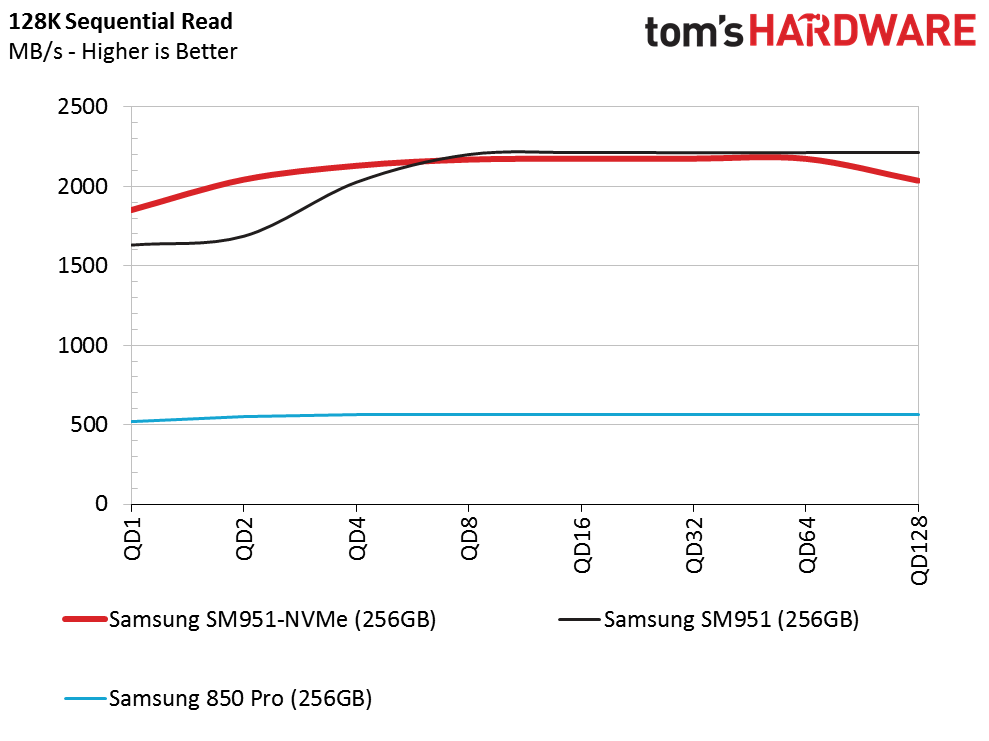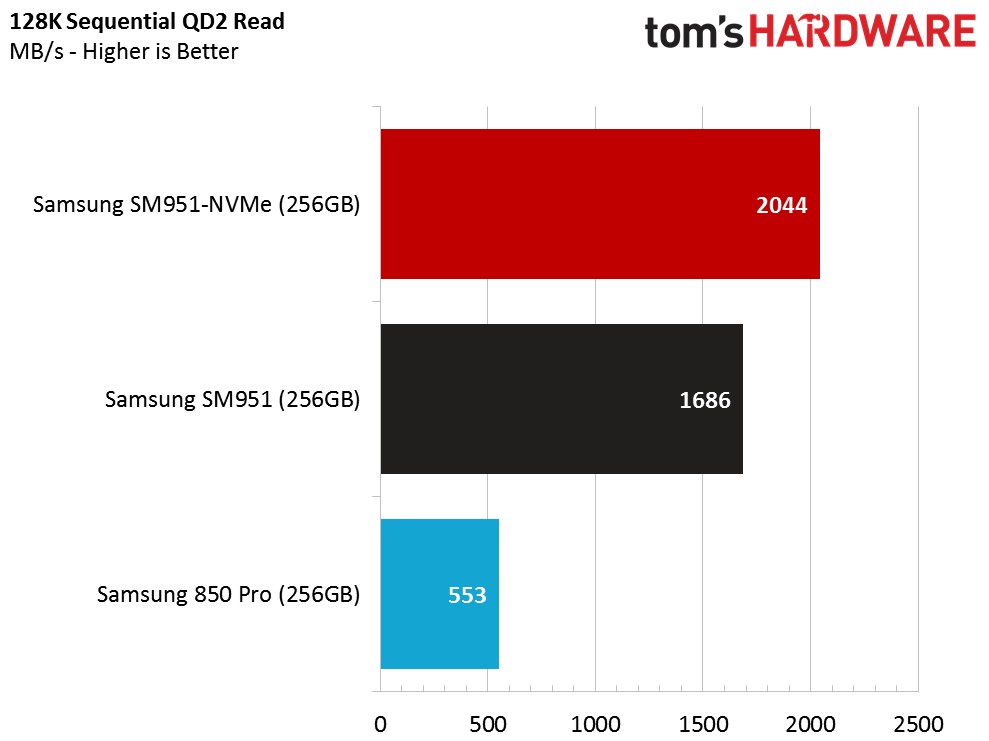Samsung SM951-NVMe Versus AHCI Versus SATA 850 Pro
Why you can trust Tom's Hardware
Sequential Read
To read about our storage tests in-depth, please check out How We Test HDDs And SSDs. Four-corner testing is covered on page six.


The Samsung 850 Pro is a great SSD, even if the SATA 6Gb/s interface limits its performance. We're confident that 3D V-NAND is capable of delivering higher performance than Samsung's two-bit MLC NAND. However, the controller isn't capable of expressing what's theoretically possible on that bottlenecked interface.
The two SM951 drives break free from the SATA standard introduced all the way back in 2008. In the two charts above, we see that even PCIe-based storage using AHCI, a command protocol introduced with Windows Vista, is a crutch to flash storage devices. Peak sequential read performance is identical between the two SM951 256GB SSDs, but we observed a large divide at low queue depths. NVMe has lower latency than AHCI, and that increases performance when there aren't many outstanding commands.
Most desktop workloads fall into the low queue depth category, and I'd rather see a small speed-up at low queue depths over a large increase at high queue depths. That's usable performance. Perhaps that justifies the SM951-NVMe's added expense, but what does it all mean for Samsung's 850 Pro?
This is why we rarely mix SATA-attached drives into our PCIe-based comparisons. The performance gap is very wide, like comparing hard drives to SSDs. When solid-state storage first emerged, readers wanted to see us compare the technology to the fastest mechanical disks. We are still in a place where enthusiasts need to see the difference with SSDs, even though the gap is massive. Next-generation isn't just a marketing term for the companies manufacturing these parts.
Get Tom's Hardware's best news and in-depth reviews, straight to your inbox.

Chris Ramseyer was a senior contributing editor for Tom's Hardware. He tested and reviewed consumer storage.
-
Amdlova hpv-2560 is rated 1.9A and the another one VPV-2560 is 2.7A Maybe you guys need test the power consumption.Reply -
atheus I find the preamble about comparing these M.2 drives to regular SATA drives a little odd. When SSD's first came out, of course they were compared to HDD's because that was precisely the question of the moment — how much more performance can one expect from the more expensive SSD's. With this new generation of SSD's, it's only natural to want to see them compared to the old, cheaper stuff. How else are we going to evaluate whether it's worth it to upgrade?Reply
If it only resulted in an extra 10% on a real-world test, then it wouldn't make any sense to spend double or more on a NVMe drive. With these solid numbers, though, the massive performance leap will be well worth the cost for those who can afford it. -
TechyInAZ Looks great! NVMe is defiantly the ideal solution for users that need high speed/responsive storage.Reply
I wish you guys would of compared this NVMe SSD to the Intel NVMe SSD that just came out. -
CRamseyer The Intel SSD 750 and the Samsung SM951-NVMe will show up side by side soon in another review.Reply -
CRamseyer Test systems: http://www.tomshardware.com/reviews/how-we-test-storage,4058.htmlReply
All three drives were tested in the PCIe test system. They are the only systems setup for testing queue depths beyond 32. -
dwnelson I'm sad the real world chart is misleading. If you show seconds instead of MB/s you'd see it doesn't justify the cost. Sad.Reply -
BoredErica ReplyThe Intel SSD 750 and the Samsung SM951-NVMe will show up side by side soon in another review.
That is a natural comparison and I look forward to reading it.